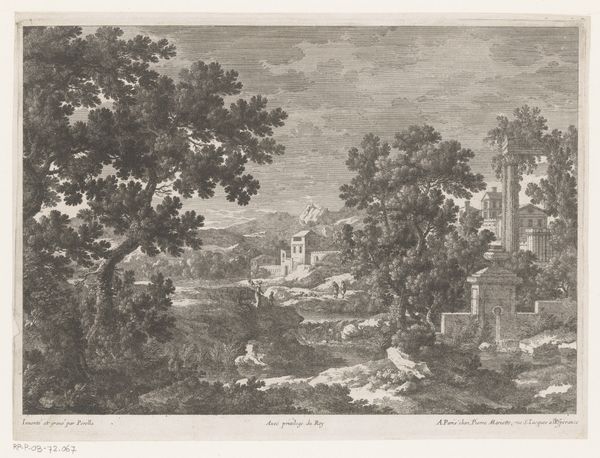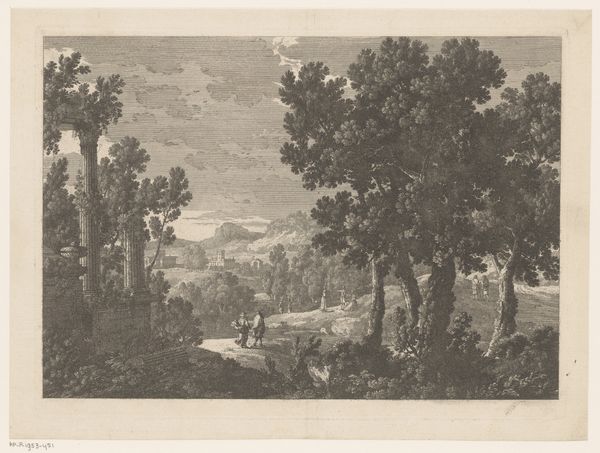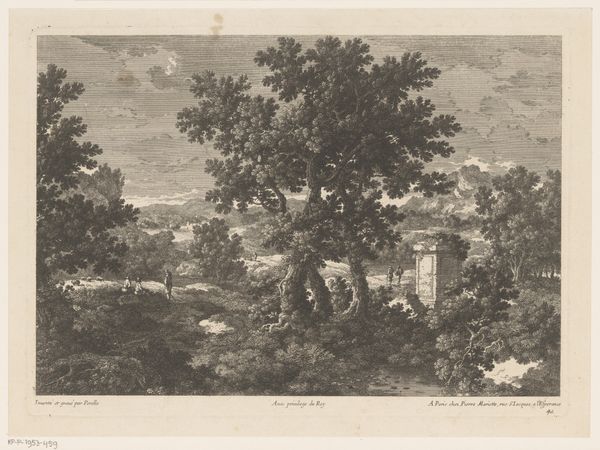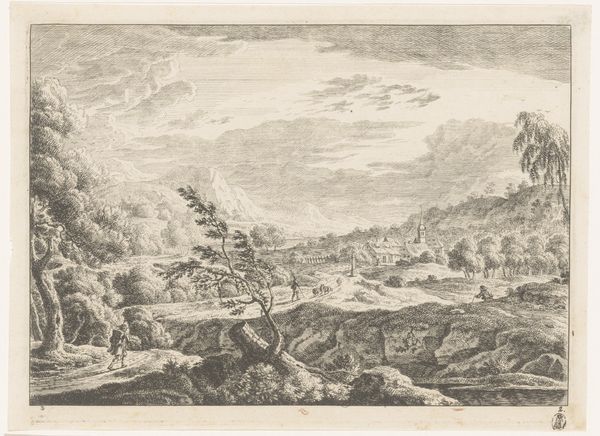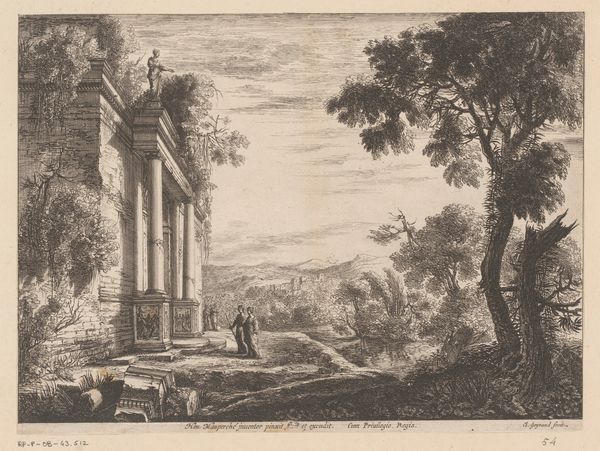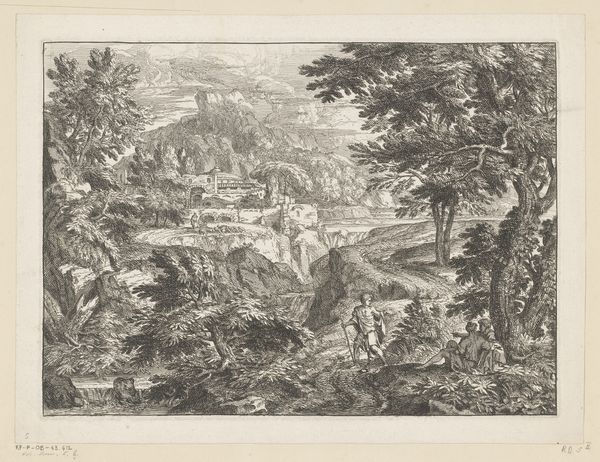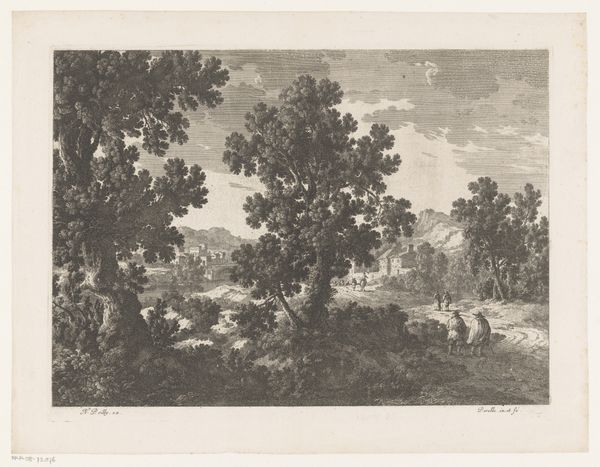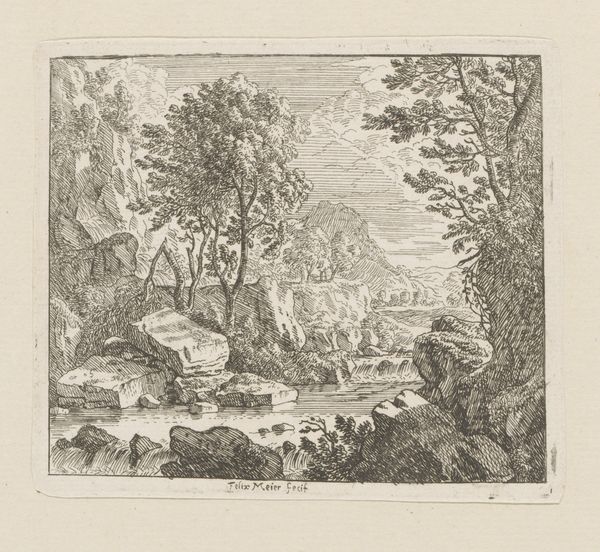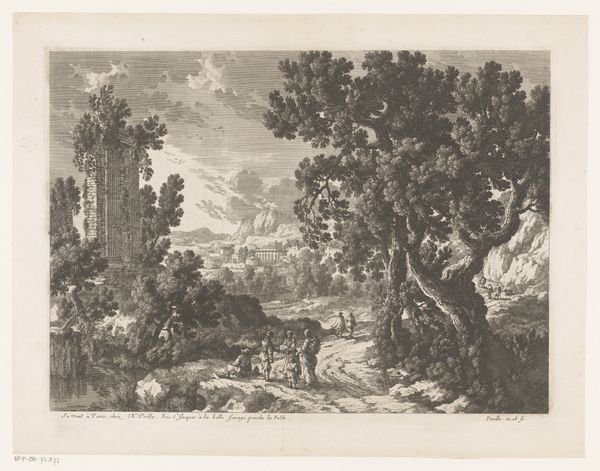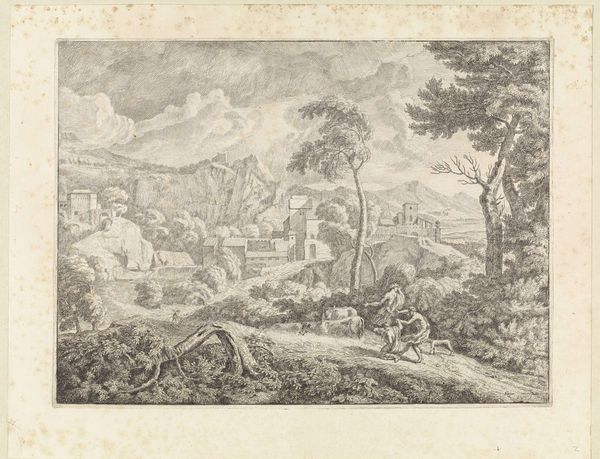
drawing, print, metal, paper, engraving
#
drawing
#
narrative-art
#
baroque
#
pen drawing
# print
#
metal
#
landscape
#
figuration
#
paper
#
engraving
Dimensions: height 317 mm, width 440 mm
Copyright: Rijks Museum: Open Domain
Louis de Châtillon created this landscape with the Apostle John sometime in the late 17th or early 18th century. The etching is predominantly a study in contrasts of light and shade, creating a rich interplay of textures. Notice how the composition guides your eye through the scene, starting with the detailed foreground where the apostle is seated. Then, past the ruined architecture, and into a distant city. The artist uses dense, tangled lines to depict the natural elements, giving the trees and foliage a sense of depth. In contrast, the architectural elements are rendered with straighter, more precise lines. This contrast between the organic and the geometric introduces a dialogue between nature and civilization. Here, the semiotic of decay suggests themes of transience and the passage of time. Châtillon uses a highly structured approach to convey deeper cultural meanings.
Comments
No comments
Be the first to comment and join the conversation on the ultimate creative platform.
